This article covers the requirements for cleaning (chemically or mechanically), pickling, passivating, and protecting the internal surfaces of new carbon steel and stainless steel piping. Internal cleaning is applicable when requirements are noted on P&IDs and associated piping drawings. Internal cleaning and protection shall be done after installation and pressure testing.
Internal cleaning involves removing corrosion products, mill scale, oils, greases, dirt, organic growth, and organic sediments, primarily to avoid damage to or poor performance of downstream equipment.
Cleaning of equipment, vessels, tanks, and transmission pipelines is not covered by this article.
Field Pipe Cleaning Procedure
The pipe internal cleaning contractor shall analyze the surface contaminants and surface condition and recommend a cleaning procedure for each piping system to the contractor with the following details:
- Analysis of surface contaminants and surface condition.
- Review of system metallurgy and evaluation of corrosion risks associated with the cleaning.
- Options available and recommended for cleaning. Recommendations for degreasing, pickling, neutralizing, passivating and drying should be included.
- Description of recommended cleaning materials (including quantities, quality, concentration, water quality, etc.) and methods.
- Corrosion rates of the cleaning solutions on the substrate metals.
- Corrosion monitoring method.
- Logistics of cleaning such as batch immersion or continuous circulation, cleaning circuits, etc.
- Items to be blocked off, disconnected, or removed prior to cleaning.
- Emissions that may be released during cleaning and methods to protect personnel and the environment.
- The proposed method of disposing of spent cleaners, equipment to be used and personnel to be involved.
- Material Safety Data Sheets/Safety Precautions
Internal Cleaning Contractor shall use only materials and process(es) approved by the contractor.
The internal cleaning contractors are solely responsible for all cleaning operations such as supervision, labor, cleaner storage, pumping equipment, filters, holding tanks, hoses, on-site laboratory, analytical testing, and each and every item of expense.
No chemical cleaning, degreasing, etc., shall take place until satisfactory completion of fabrication, heat treatment, examination, and hydro testing (if applicable).
Chemical solutions shall not be introduced into piping systems or equipment unless high-point vents and low-point drains are available to ensure proper filling and complete removal of solutions.
When circulating fluids through an assembled piping system, vessels, exchangers, compressors, etc. shall be positively isolated by blinds. Extreme care shall be exercised to prevent the entry of any cleaning chemicals or vapors into any part of the machinery.
Mechanical/Physical Cleaning of Piping System
Components of piping designated to be chemically cleaned shall be examined before fabrication, and, where necessary, mechanically and/or physically cleaned (e.g. by scraping, wire brushing, blasting with abrasive, steam cleaning, or shot jet cleaning) to remove loose scale, foreign matter, and protective coatings, which may otherwise make satisfactory chemical cleaning impossible, before fabrication commences.
Company-approved procedures shall be used for mechanical/physical cleaning In using mechanical or physical methods, great care shall be taken not to damage the equipment being cleaned.
Following mechanical and/or physical cleaning, the piping shall be inspected to ensure that the internal surfaces are free of weld spatter, grinding debris, abrasives, dust, loose materials, etc. All open ends shall then be temporarily sealed to prevent the ingress of a foreign matter pending the chemical cleaning operation.
Cleaning Agents or Cleaning Materials
Field chemical cleaning materials shall generally be limited to biodegradable detergent cleaners and/or citric acid-based cleaners.
Passivation materials will generally be sodium nitrate or inhibited phosphoric acid. However, other degreasing, pickling, cleaning, or passivation compounds may be submitted for CONTRACTOR/ COMPANY review and approval.
The cleaners shall not contain chemicals such as chromates and lead compounds which could cause soil and groundwater contamination.
The chloride content of stainless steel cleaning solutions shall not exceed 2 ppm.
All cleaning solutions shall be prepared, handled, and used in accordance with the manufacturer’s data sheets and recommendations.
Internal Cleaning Procedures
Cleaning of stainless steel surfaces shall be in accordance with ASTM A380 and testing as per ASTM A967. Piping and equipment manufactured of austenitic materials shall not be allowed to come in contact with solutions containing chlorides such as hydrochloric acid and chemicals containing chlorides as impurities. A compatibility check shall be performed prior to cleaning in order to ensure that Valve seals, Injection Quills, etc. are not damaged by cleaning fluids.
Aluminum, galvanized carbon steel, magnesium, and zinc surfaces shall not be allowed to come in contact with acid-cleaning solutions.
The following items shall be blocked off, disconnected, or removed from the piping system prior to the initiation of cleaning:
- Bearings Oil Reservoirs and Tanks
- Cylinders Orifice Parts
- Filters Plug Cocks
- Instruments Relief Valves
- Equipment Screens
- Special valves and miscellaneous items
- Items temporarily removed from systems may be replaced by temporary spools whilst the cleaning is in process.
- Care must be taken that “dead” pockets of the line do not exist in which fluids and debris could accumulate.
Corrosion Monitoring
A corrosion test shall be performed by the Internal Cleaning Contractor on a sample of the cleaning fluid to be used for cleaning. The test duration shall be 24 hours and test coupons shall be the same material as the equipment or system to be cleaned.
From the weight loss of the test coupons, the corrosion rate can be determined, which should not be more than 0.01 mm/24 hours. If higher corrosion rates are measured or if any pitting is observed, the inhibitor shall be replaced and the test repeated until acceptable results are obtained.
The method of monitoring shall be proposed by the Internal Cleaning Contractor for company review and approval.
Corrosion control during chemical cleaning shall be demonstrated by the use of a suitable method(s) of corrosion monitoring including the use of corrosion coupons installed for the total cleaning duration.
Chemical Solution and Rinse Disposal
Following water washing, all spent chemical solutions and rinses shall be completely discharged by draining and flowing out with high-pressure air jets from the lowest points in the system and must be disposed of in an environmentally acceptable manner approved by the company.
If detergent, soda ash solution, rinses, and other liquids are discharged to public waters, these liquid effluents must comply with the applicable state and local discharge regulations, guidelines, and standards.
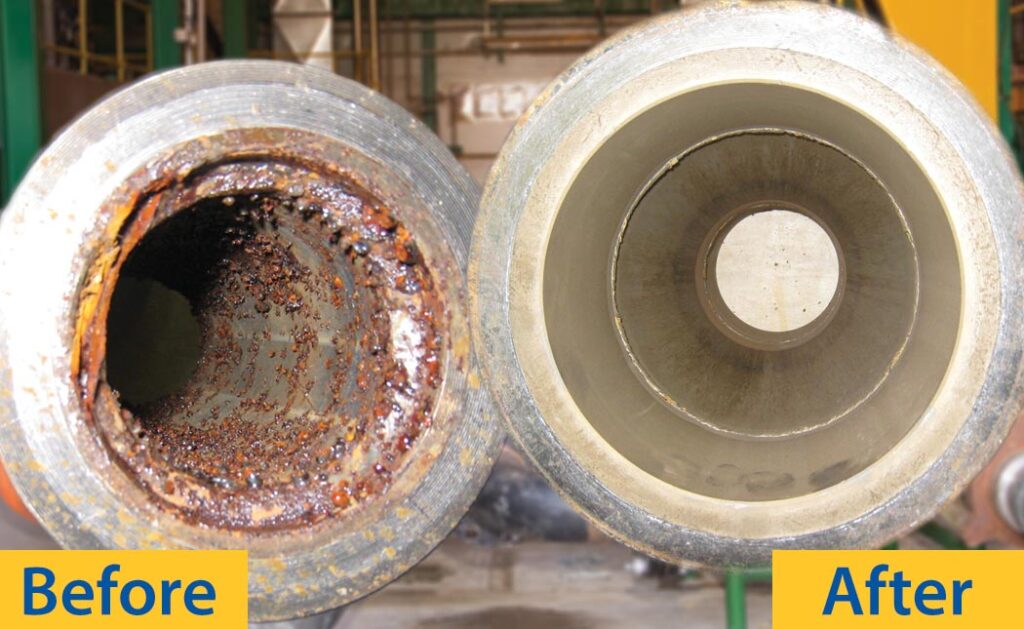
If any liquid effluent streams are discharged to a sewer system connected with a sewage treatment plant, they must comply with the applicable state and local pretreatment regulations.
Chemical solution and rinse disposal shall be proposed by the internal cleaning contractor for company review and approval.
Pipe Inspection and Preservation
The piping shall be inspected before and after cleaning to check the effectiveness of the cleaning operations and look for signs of a metal attack.
Externally cleaned surfaces shall be visually examined under a lighting level, including both general and supplementary lighting, of 2700 lux on the surfaces being examined. A lighting level of 1100 lux may be used upon the contractor’s approval. The visual examination shall be supplemented with closed-circuit television cameras, borescopes, mirrors, and other aids, as necessary, to properly examine inaccessible or difficult-to-see surfaces. Lights shall be positioned to prevent glare on the surfaces being examined.
Where visual examination is not practical, a clean, lint-free, white cotton cloth or filter paper moistened (but not saturated) with high-purity isopropyl alcohol (rubbing alcohol) may be rubbed against the surfaces at all openings. The presence of a smudge on the cloth or filter paper is evidence of incomplete cleaning and the cleaning shall be repeated.
The visual examination shall confirm that cleaning solutions are completely removed.
After inspection, cleaned piping shall be filled with nitrogen to 0.35 kg/cm2 g and sealed until plant start-up. The nitrogen pressure shall be checked regularly and topped up as required.
Prior to Nitrogen filling, pipes shall be dried with dry air. During the drying operation, the moisture content of the incoming and outgoing air shall be monitored by the cleaning contractor to ensure the satisfactory completion of the drying operation.
Safety of Pipe Cleaning Personnel
The Internal cleaning contractors are responsible for the health, safety, and well-being of field cleaning personnel and all other parties in the general environment where cleaning operations occur.
The internal cleaning contractors shall employ proper and safe practices for the storage, handling, and disposal of chemicals and spent materials.
Manufacturer’s and governmental safety guidelines, recommendations, and instructions shall be complied with for the prevention of harm or injury to any person before, during, or after these cleaning and pickling activities.
The internal cleaning contractor shall enforce the use of protective clothing and safety accessories such as eye protection, face shields, gloves, and breathing apparatus as required. Internal cleaning contractor’s safety measures shall be submitted to the Company for approval.
The cleaning area shall be closed to unauthorized personnel.
Warning signs shall be posted to forbid smoking, welding, flame cutting, and unauthorized entering of the cleaning area.
During cleaning with acid, adequate venting shall be provided to prevent the accumulation of an explosive gas mixture; special care shall be taken to vent isolated pockets in a safe manner.
Identification of Cleaned Pipe
Cleaned pipe shall be metal tagged in English and the local language to avoid subsequent contamination. The tag shall read “KEEP SEALED UNTIL READY FOR USE. INTERNALLY CLEANED AND PRESSURIZED WITH NITROGEN ON (Date).” Pipe shall not be marked with paint or ink, in lieu of metal tagging.




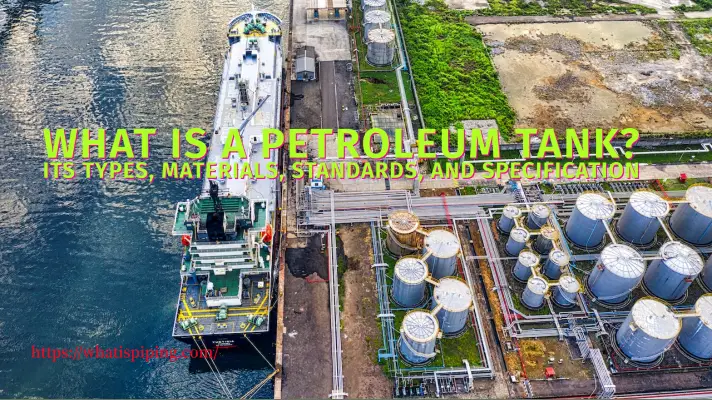
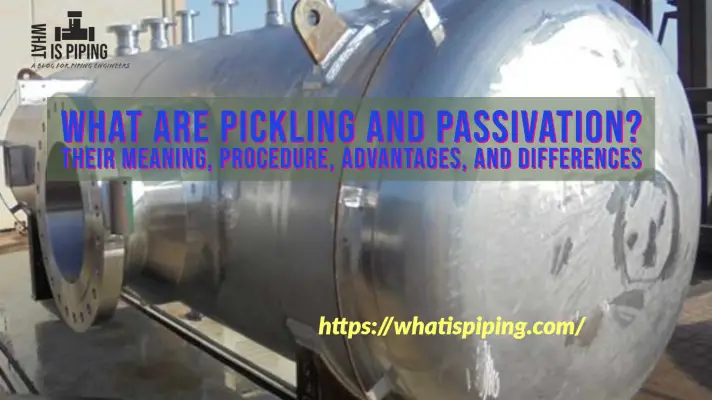
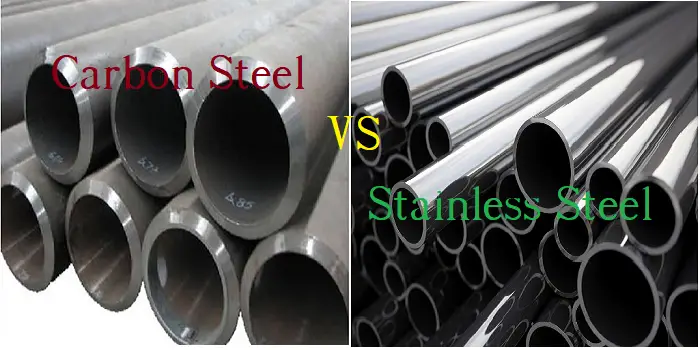
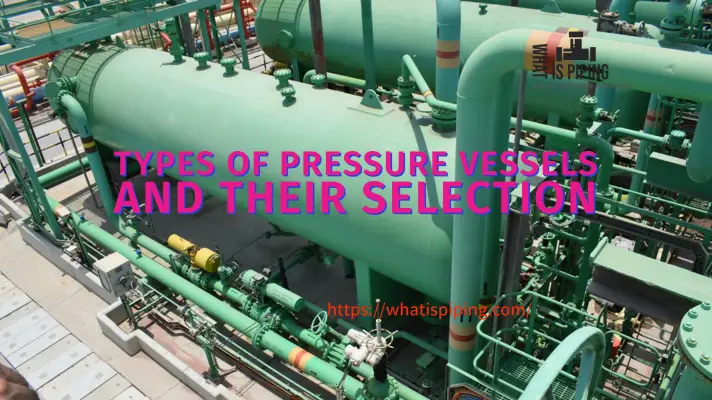

Very well written and help in understanding the Technicality of piping system cleaning/preservation. Thanks for sharing.